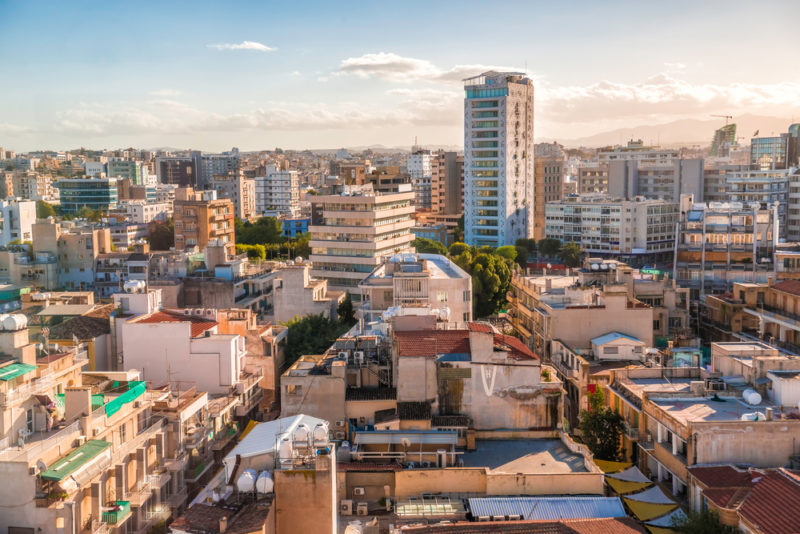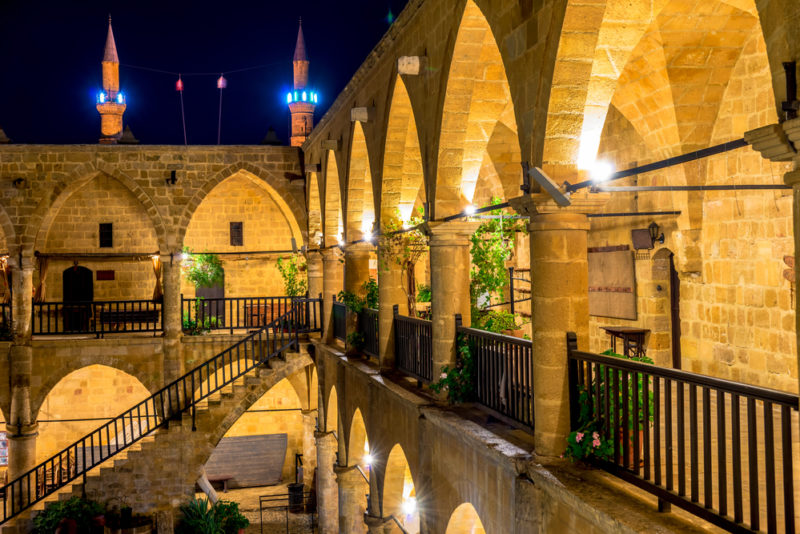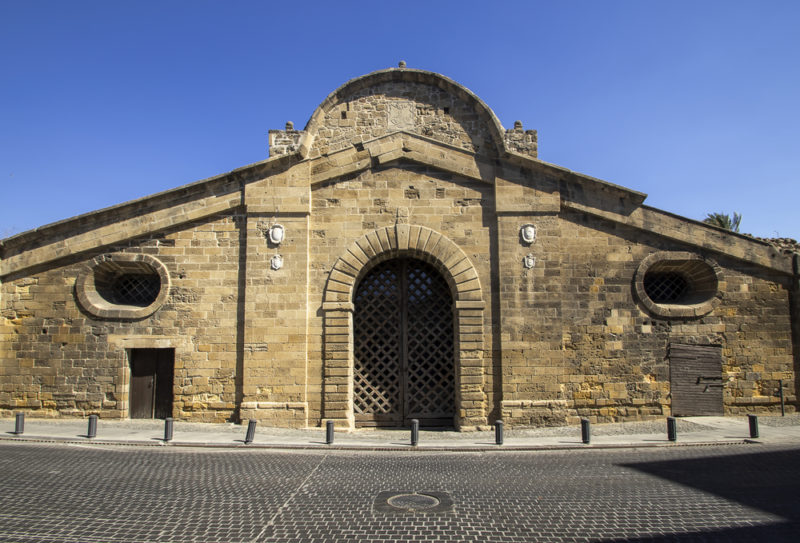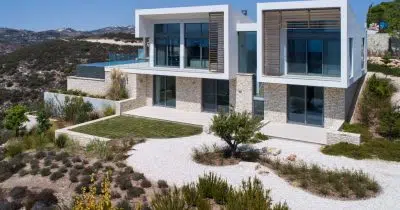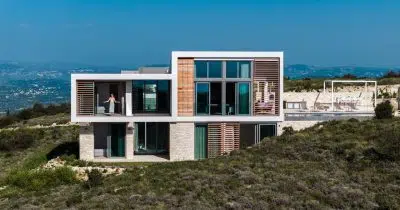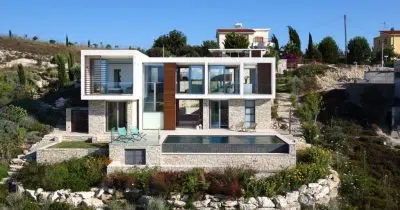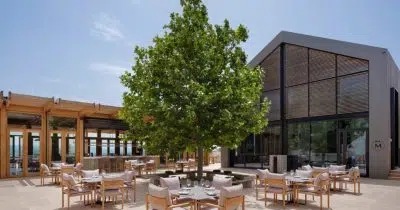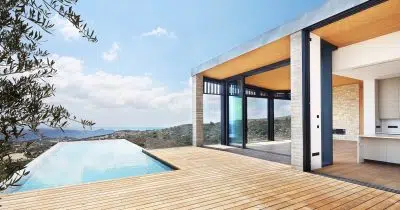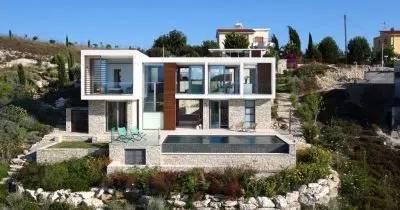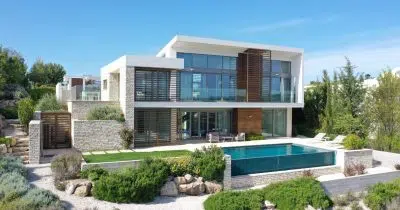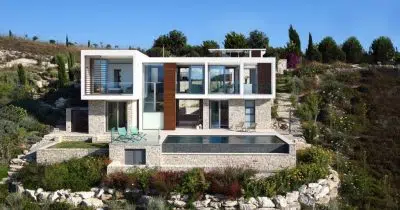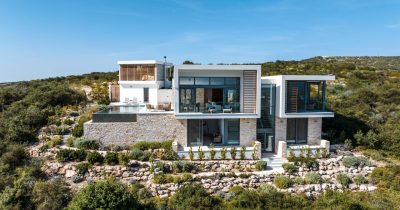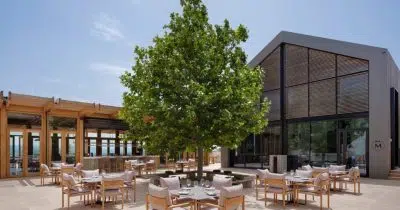Inevitably, our clients buying property in Cyprus always ask about Nicosia. Nicosia, the captivating capital city of Cyprus, is possibly one of the world’s most misunderstood cities. Yet anyone who is thinking of buying property, living in Cyprus, or even just holidaying there should take the time to know Nicosia city.
They will discover charm with bustling streets, archaeological treasures, and blended ancient traditions and modern innovation. Regardless of where you buy in Cyprus, Nicosia also makes for great day trips and extended city breaks. So, in this article, we answer the common questions and list the main highlights that make Nicosia delightful.
About Nicosia –Capital of Cyprus
Is Nicosia Turkish or Greek?
Nicosia splits into two parts: the southern part, known as “Nicosia” or “Lefkosia” (in Greek), and the northern part, known as “Lefkoşa” (in Turkish). These are sepearted by the green line. The southern part of Nicosia is controlled by the internationally recognised Republic of Cyprus and is inhabited by Greek Cypriots. Other countries recognise this part as the legitimate capital city of Cyrus.
The northern part of Nicosia is within the self-declared Turkish Republic of Northern Cyprus (TRNC), recognised only by Turkey. This part is inhabited by Turkish Cypriots. This division resulted from the Cyprus conflict in the mid-20th century, creating a buffer zone called the United Nations Buffer Zone in Cyprus (UNFICYP) that separates the two sides.
Where do you Cross the Green line in Nicosia?
Crossing the border in Nicosia is a unique experience due to the division between Cyprus in the south and the Northern Turkish Republic of Northern Cyprus (TRNC). The border crossing is facilitated by specific checkpoints, and visitors can explore both sides. The Ledra Street crossing is for pedestrians only, while the Ledra Palace Crossing is for pedestrians and vehicles.
When crossing the border, you will need your passport or valid ID card (depending on your nationality) for identification and entry/exit procedures. Border officials will conduct checks, so comply with their instructions. These checks are standard procedures and are intended to ensure safety and security.
History of Nicosia
The origins of Nicosia stretch back over four thousand years. Layers of history lie beneath the modern streets. The Phoenicians, Assyrians, Persians, and Romans all left their footprints. However, the Byzantines constructed walls that still stand today.
In 1192, Nicosia became the capital of the Crusader Kingdom of Cyprus, which was later taken over by the Venetians. The city’s narrative changed with the arrival of the Ottomans in 1570. The imposing walls that once shielded against invaders now delineated a border within the city. Nicosia became divided, with the southern part under Ottoman control and the northern portion under Venetian influence.
By the late 19th century, Nicosia, like much of the Ottoman Empire, was experiencing waves of change. Nicosia began to modernise with new infrastructure and European-inspired architecture. However, this period of transformation was not without its challenges. The 20th century brought both World Wars, which cast their shadows over Nicosia, altering its destiny yet again.
The mid-20th century marked turning points for Nicosia, as Cyprus gained independence from British colonial rule in 1960. Yet, the autonomy was tenuous as tensions between the Greek and Turkish Cypriot communities simmered beneath the surface. The division saw Nicosia physically split by the United Nations Buffer Zone, creating surreal atmospheres where time seemed to stand still within the old city walls.
Despite the tumultuous history, modern Nicosia blends cultures, languages, and traditions. The streets, adorned with contemporary art galleries, bustling cafes, and markets, are where the echoes of history reverberate amidst everyday life.
Geography and Facts to Know
Situated almost in the centre of Cyprus, Nicosia is the world’s only divided capital, with the United Nations Buffer Zone dissecting the city into northern and southern sections. This division lends poignant layers of intrigue to Nicosia’s geography. Nicosia is the largest city in Cyprus and serves as the political, economic, and cultural centre. Nicosia covers approximately 111 square kilometres (43 square miles).
Ledra Street on the Southern Side
Ledra Street, a bustling pedestrian thoroughfare, is the beating heart of Nicosia’s modern scene. Lined with shops, cafes, buildings, and boutiques, this vibrant street encapsulates the cosmopolitan spirit. Ledra Street is significant due to its location near the United Nations-patrolled Green Line.
The first crossing, called Ledra Street Crossing or Ledra Palace Crossing, was opened in April 2008, allowing pedestrians to cross from the Cyprus-controlled southern side to the northern side and vice versa. This marked significant symbolic steps toward reconciliation and communication between the divided communities. The street remains popular with locals and tourists, offering shopping, dining, and entertainment options.
Eleftheria Square to Symbolise Cyprus
Eleftheria Square, also called Liberty Square, is within 2 minutes walk of Ledra Street. Named “Liberty Square” to commemorate Cyprus’ struggle for independence and freedom from British rule, the square underwent significant redevelopment in the early 21st century, resulting in modern and open public spaces with pedestrian-friendly areas, green spaces, water features, and architectural elements.
The square is home to several important monuments and landmarks, including the “Obelisk of Liberty,” a tall column adorned with symbols representing Cypriot heritage and struggles for independence. The redevelopment of Eleftheria Square was part of broader urban transformations to enhance Nicosia’s infrastructure, public spaces, and overall quality of life. The square’s central location makes the place easily accessible from various parts of Nicosia. It is near important landmarks, including the Cyprus Museum and the House of Representatives.
Venturing deeper into the southern quarters, you’ll also discover charming neighbourhoods with glimpses into Nicosia’s diverse character, like Engomi, with its tree-lined streets and upscale villas that exudes tranquil elegance.
Laiki Geitonia – The traditional shopping district
For traditional shopping in Nicosia, head to the historic area called the “Laiki Geitonia.” This charming district is characterised by narrow streets, stone-paved alleys, and traditional architecture, creating unique atmospheres. Laiki Geitonia attracts those seeking authentic Cypriot shopping experiences, where local crafts, souvenirs, and classic goods take centre stage. Laiki Geitonia is 5-minute walk from Ledra Street.
Stasikratous Street – Luxury Shopping in Cyprus
Stasikratous Street features high-end boutiques, designer shops, cafes, and vibrant atmospheres that attract locals and visitors seeking luxurious shopping experiences. The street, lined with boutique shops selling high-end fashion, accessories, cosmetics, and home decor from renowned international and local designers means you can splash the cash in style. Then relax in numerous cafes and eateries to enjoy beverages and food. The street in Nicosia’s city centre is easily accessible by foot or car and a short walk from other popular areas, such as Ledra Street.
Makarios Avenue
Makarios Avenue, also called Archbishop Makarios III Avenue, is a main thoroughfare in Nicosia. The avenue holds significant historical, cultural, and commercial importance. It is named after Archbishop Makarios III, who was the first President. Lined with shops, boutiques, cafes, restaurants, and other businesses, the road boosts the shopping, dining, and entertainment scenes.
Makarios Avenue is also home to several significant landmarks and institutions. The Presidential Palace, the official residence of the Cyprus President, is on the avenue. Additionally, you’ll find government buildings, embassies, and cultural centres here.
Parts of Makarios Avenue are pedestrian-friendly, allowing for leisurely strolls and exploration. The wide sidewalks and outdoor seating areas create pleasant environments for pedestrians. The avenue, a major transportation artery, facilitates easy access to various parts and is well-connected to other main roads and places of interest in Nicosia.
North Nicosia
North of the Green Line lies history, heritage, and enchantment. On Sarayönü Square, this is where you will find the walled city part. Encircled by towering Venetian walls, this labyrinthine district takes you back to medieval times. Quaint cobbled streets wind past centuries-old churches adorned with intricate frescoes, stone-paved courtyards, and traditional houses.
The city walls have undergone restoration and preservation efforts to maintain their historical integrity. Some sections have been carefully restored to allow visitors to appreciate their original grandeur. Visitors to Nicosia can explore the walls, walk along ancient paths and observe architectural details that have survived through centuries. Climbing certain sections offer panoramic views.
Dominating the skyline of North Nicosia is the Selimiye Mosque, a true masterpiece of architectural ingenuity. Built initially as the Byzantine Cathedral of Saint Sophia, the landmark was transformed into a mosque during the Ottoman era.
A short stroll leads us to Büyük Han, an exquisite example of Ottoman architecture. This 16th-century historic inn beckons with peaceful courtyards and charming galleries. Today, Büyük Han hosts exhibitions, performances, and artisan workshops showcasing traditional crafts.
As we wander through north Nicosia, verdant oases like Atatürk Square and the Atatürk Garden offer peaceful respites amidst the urban landscape. These green spaces provide welcome contrasts to bustling streets.
Other Things to Do in Nicosia
Nicosia offers many activities and attractions for various interests and preferences, whether you’re interested in history, culture, art, or simply enjoying the local atmosphere.
1: Cyprus Museum: The Cyprus Museum, the oldest and largest archaeological museum on the island, houses an extensive and impressive collection of artefacts spanning the island’s rich history and cultural heritage, from prehistoric to Byzantine times. The museum provides valuable insights into Cyprus’ archaeological, artistic, and historical evolution.
- Cyprus Handicraft Center: The Cyprus Handicraft Center, also called the Cyprus Handicraft Service, promotes and preserves traditional Cypriot craftsmanship and cultural heritage. The centre showcases and supports local artisans and their traditional skills and provides visitors with opportunities to learn about and purchase authentic Cypriot handicrafts.
3: Famagusta Gate: The Famagusta Gate, also called Porta Giuliana, is the most well-known and historically significant gate of the Venetian walls that once surrounded Nicosia. The gate testifies to Cyprus’s rich history.
4: Relax at Parks and Gardens: Nicosia offers several parks for residents and visitors to enjoy nature, relaxation, and outdoor activities. They include Makario Stadium Park (Dasoupoli Park), Acropolis Park, Athalassa National Forest Park, and Pedieos River Linear Park.
5: Omeriye Mosque: The Ömeriye Mosque’s history spans several centuries, having been originally built as a 13th-century Gothic-style Roman Catholic cathedral called the Saint Sophia Cathedral during the Lusignan period when Cyprus was under Frankish rule.
Getting to Nicosia by Air
Nicosia international airport sits 8 kilometres away but hasn’t been used since 1974. Most people, instead of using Nicosia airport, head to Larnaca airport. Larnaca Airport (LCA) is the primary gateway to Cyprus and a significant hub for domestic and international flights. The airport is 45 minutes away, and most people use the shuttle bus or taxis.
Paphos International Airport is Cyprus’s second-largest airport near the southwestern coast. Meanwhile, Ercan International Airport is not officially recognised by most countries. The airport is mainly used for flights to mainland Turkey.
Getting There from Other Parts of Cyprus
From Limassol via the A1 highway: Just an hour away from Nicosia, Limassol is the second-largest city in Cyprus after the capital, Nicosia. Limassol is known for its vibrant atmosphere, beautiful beaches, historical sites, and thriving business and commercial sector. Limassol also attracts many tourists with blended modern amenities and traditional charm.
From Paphos from the A6 and A1 highways: Sitting a two-hour drive away, Nicosia also makes a great day trip out from Paphos. Many foreigners buy property in Paphos, either to use as a summer holiday home or permanent living. Being a two-hour drive away from the capital gives them the best of both worlds because they can apricate a slower pace of life while tapping into urban delights.
From Larnaca Via the A2: 50 minutes drive, Larnaca is a popular destination for expatriates and foreigners seeking to live in Cyprus. On the southern coast, Larnaca is known for vibrant atmospheres, beautiful beaches, and historical sites that attract expatriate communities.
From Ayia Napa via the A3: Just an hour’s drive away, Ayia Napa experiences significant seasonal variation in tourism. The summer months, especially June to August, are the peak tourist season, while the town tends to be quieter during winter.
From Kyrenia: Driving via the k25, Nicosia can be reached in just one hour from Kyrenia. Kyrenia, known as Girne, sits on the northern coast under the TRNC.
Also About Cyprus
Major Cities: You’ve probably heard of the vibrant city life in Barcelona, Rome, Paris or Istanbul, but have you ever considered Cyprus and the beauty it has to offer? This Mediterranean gem is home to many cities with a legacy of art and culture stretching back centuries. The major cities in Cyprus, like Nicosia, are highly underrated internationally. This article explores more urban landscapes aside from Nicosia, the capital.
